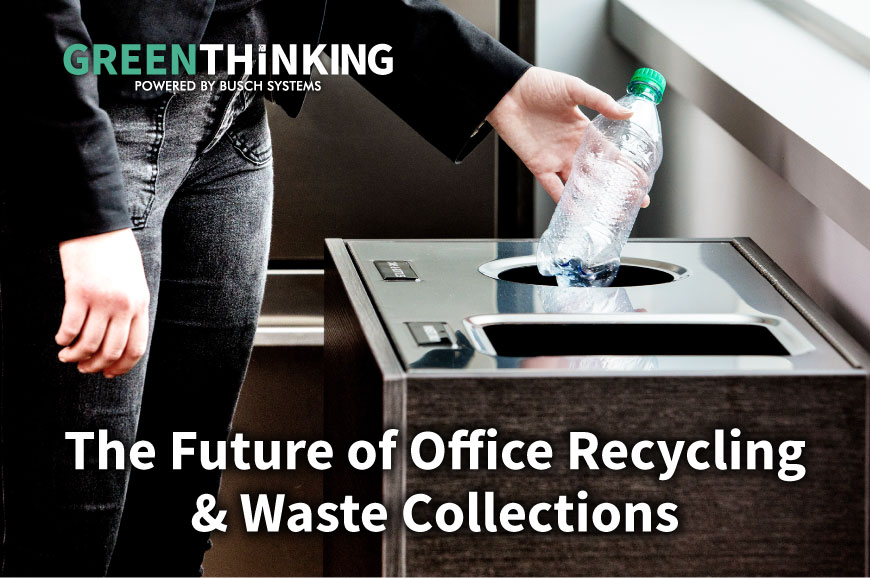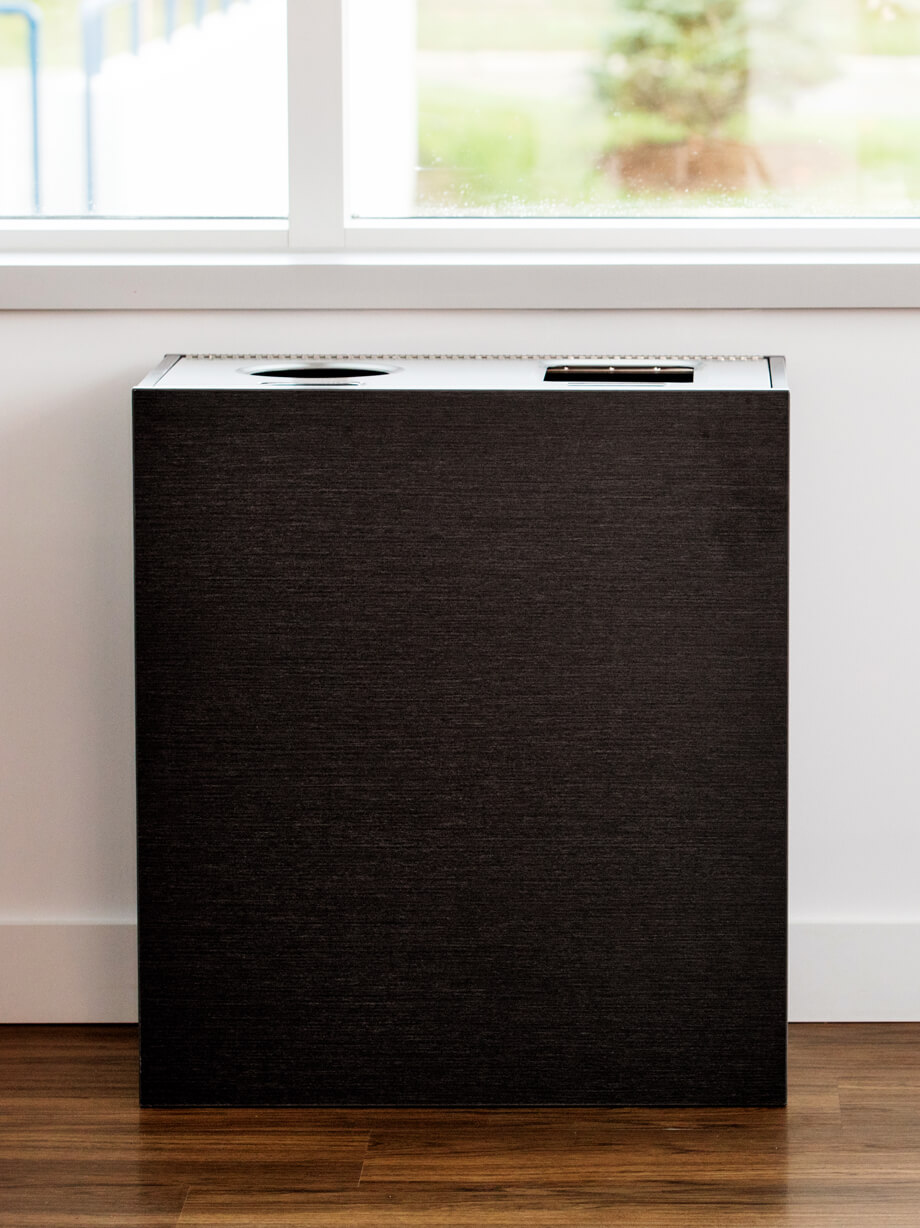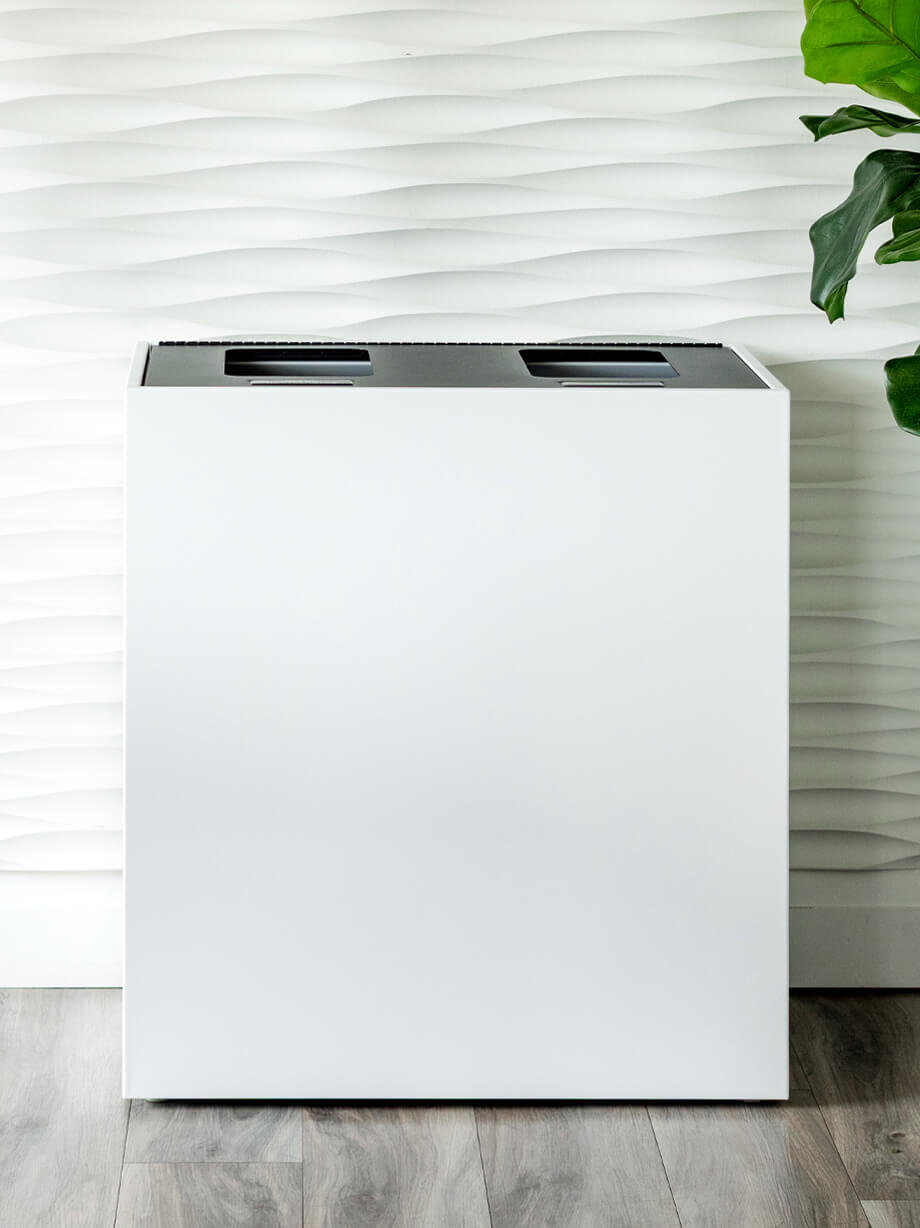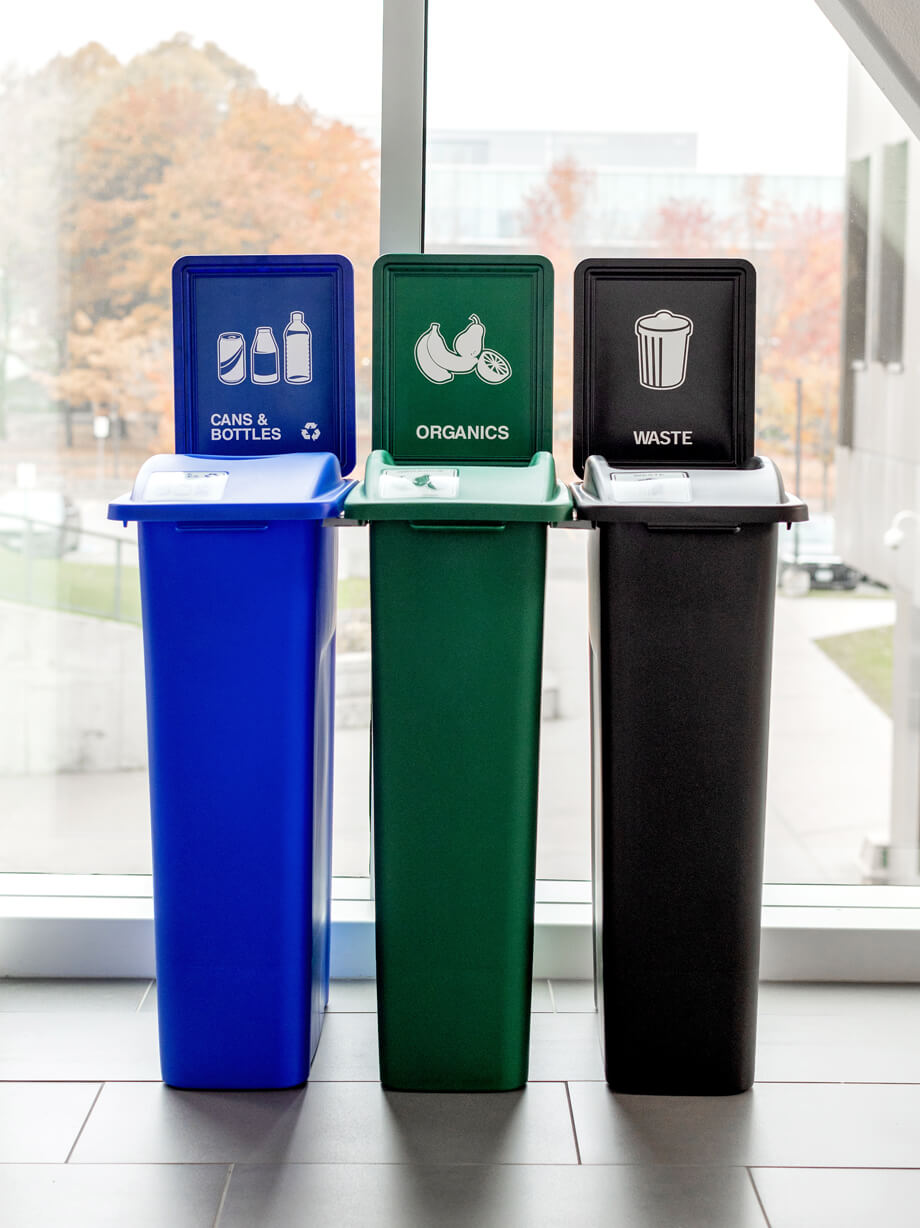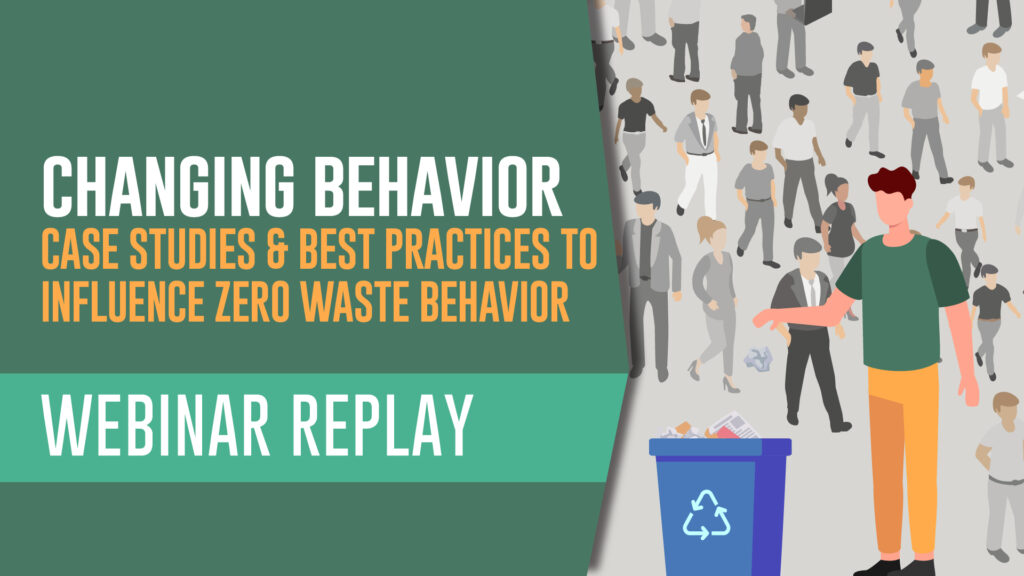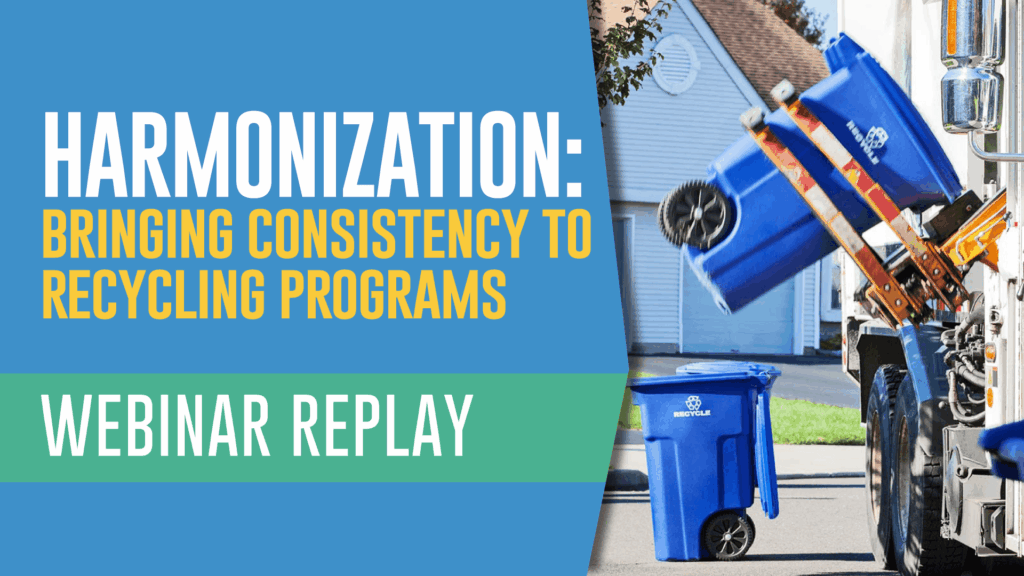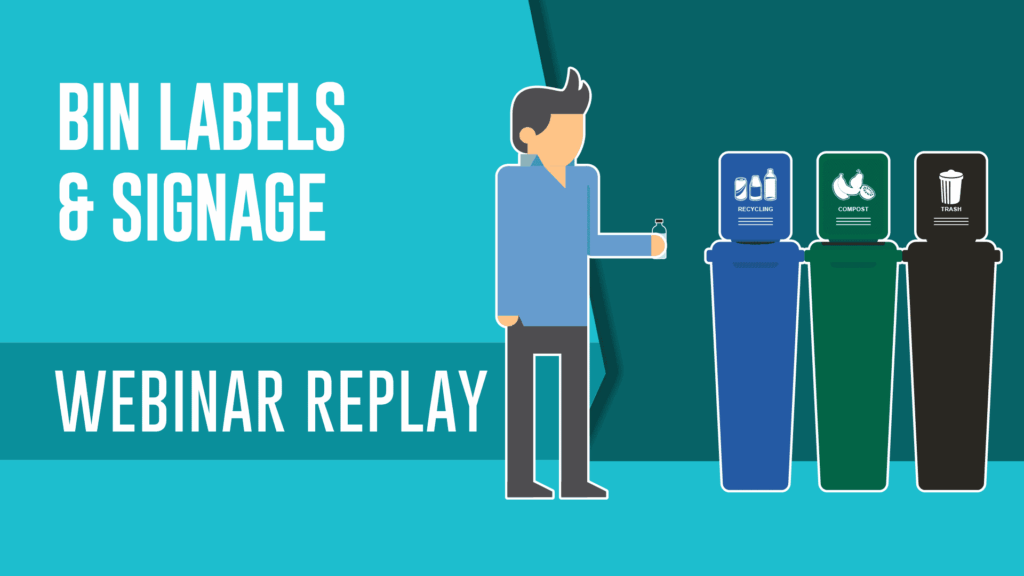The following is a list of questions that were asked by attendees during our Future of Office Recycling and Waste Webinar, with answers from our panelists. We have organized the questions based on general topics. If you have any questions on Office Recycling and Waste, please reach out to alecc@buschsystems.com to have your questions added to the list!
Deskside
Has anyone instituted a centralized system during COVID?
Amy: Yes, SBM has several clients who have implemented a centralized system while occupancy is low so that when people return they come back to the new set-up.
Alec: Yes. In addition to UCLA, the Campus / COVID survey Busch did w/ CURC, ZW Campus Council & US Composting Council back in the fall showed a large number of campuses have been looking to switch, driven in part by the changes caused by COVID. See the tabs on this Google doc with survey results.
Is my understanding correct that mini trash cans used without a plastic liner have minimal need to be cleaned? Like washed with soap & water?
Amy: Usually it is the individual employees who bring them back. The cleaning crew generally does as they are instructed/trained. Part of the janitorial training could be to not service any deskside bins that ‘come back’ and to alert supervisors if they see them (or to remove them).
Alec: That’s correct for the instances I’m aware of, arrangements put in place to clean bins rarely get used. This can be reinforced to concerned staff with the suggestion they simply take “icky” items straight to the centralized bins.
If the bins have been removed, how do you ensure the cleaning crew doesn’t put them back?
Kikei: They are removed completely from the building and are placed in our maintenance yard for holding. In addition, we have instructed and constantly reminded custodial staff that desk-side bins are not to be serviced ever again unless there is a request for ADA compliance.
Has anyone done this with a 2 stream GMP vs cardboard system? We have made the switch but are still figuring out how to convey that message that the blue bin is just for paper.
Alec: Make sure there is a clear, convenient, well-communicated alternative process for cardboard. The common arrangement I’ve seen is to instruct staff to break down boxes and leave them either 1) outside their door at the end of the day, or 2) set to the side of their wastebasket or centralized bins. If there is space available in a backroom or common space well away from any egress pathways (always consider fire codes), I’ve seen a small 1 yd. wheeled carts designated for employees to leave cardboard.
Amy: Ensure that all signage is clear and consistent. Have additional education/outreach targeting this.
Any tips on duplicating a system piloted at one building to many other buildings of various sizes/people?
Kikei: I’d recommend writing down a list of things that worked with the pilot and applying the foundational pieces of your pilot to a large scale. For example, our pilots started out with breakrooms/kitchenettes and conference rooms. That can be scaled up to any building. We also did a volume breakdown so for every “new” standardized bin that was 50 gallons in total volume, it would replace XYZ many of the existing infrastructure and also try to calculate it that way. If the existing bins weren’t ever full, then we’d take that into consideration as we’re centralizing our bins. Work with your building stakeholders to understand their needs.
Alec: I have a separate but related suggestion regarding pilots. If you’re implementing a new system for a large, complex organization with multiple unique departments or settings, consider doing a couple of diferent pilots in consecutive order. There can be a nuance in how the new arrangement will work and be received between one setting and another. Be very public about seeking feedback from the employees who tested the system, and then be very explicit in showing how the lessons learned from this first pilot are being used to tweak the design for the subsequent pilots. Beyond simply refining the plan before rolling it out to the entire organization, the multiple pilots can be leveraged with your communication strategy to overcome potential complaints. It demonstrates 1) good faith that you’re taking people’s concerns into mind, 2) have put a lot of thought to ensure the system has been well designed. People may still not like it, but they can’t claim they’re being victimized by an arbitrary half-thought-out plan.
Centralized Bins Stations
Has anyone had to source Blast Resistant Containers?
Amy: Yes, for high-security, outdoor public areas. Bin specs are typically provided/approved by security teams. There aren’t as many varieties in color/shapes, however, you can design color-coded stickers/decals for multiple streams so that the education component is consistent across bins.
Alec: Good question. I’m not familiar with who sells these, but a direction to research would be airports. I haven’t looked through this website extensively, but the FAA has guidelines and resources for airport recycling that may include recommended specs for blast-proof bins or leads where to shop for them.
How do you measure waste data before and after a system has been placed? Do you measure by filling out the % fullness?
Alec: It obviously depends on what you’re trying to measure. If the goal is to measure the impact of a new system, the ideal thing is to do before & after waste audits to measure the percent of recoverable and non-recoverable items found in both/ each stream. This gets you data on contamination as well recovery rates. The less insightful but easier to accomplish step is to simply measure the quantity of material from each stream. In that case, it is still better to actually weigh what’s collected over a week or longer period. From my experience, simply marking how full bins is not going to reveal much if you’re goal is to measure impact.
Kikei: We do a full-on waste audit at UCLA (that’s where my metrics came from). Dumpsters are emptied out, all bags are opened up, and all waste is hand sorted. I have a waste audit guide that differentiates between visual audits and site-specific studies that I can share.
I’ve seen information on including wet v’s dry being included on signage, do you recommend adding “only dry” to recycling signage?
Kikei: Never tried this, but we definitely say “no liquids” in the recycling which seems to resonate with people.
Alec: I would avoid this specific language. The meaning may be obvious to you as the recycling coordinator, but it’s likely to be ambiguous to the general public. As Kikei points out, you could do a call-out message to empty out liquids, but I would personally only do that if it is a chronic problem causing heartburn with your recycling provider. You have to way the risk of overloading people with too much information on signage against the severity of the problem.
Amy: Wet v dry can help but it may also lead to some confusion. ‘Empty’ or ‘soiled’ ‘clean’ are other terms that I have seen used with success. ‘Empty bottles only’ ‘Soiled food containers’ ‘Soiled paper’ ‘Clean containers’
I am with an airport and would love to implement some of your points to our offices and terminals.
Alec: See my response to “Has anyone had to source Blast Resistant Containers?” above. The FAA has a number of resources including best practices specific to recycling in airports. Airports, like other public spaces (parks, downtown areas, etc.) are unique from office settings in that people’s relationship to the recycling system is fleeting. With a work location, people can become familiar with how and what to recycle over time. With an airport, you’re almost entirely dependent on the bin itself to guide behavior… as people are running to catch flights. For that reason, the general design/signage best practices are even more critical. Check out this public space recycling best practices guide.
I have other reports, case studies, etc specific to airports if you’re interested. Contact me directly – alecc@buschsystems.com
Amy: There can also be difficulties with various stakeholders independently managing waste collection. Cross stakeholder training and education can help with that component.
Collections / Housekeeping
What types of best practices do you suggest for Custodians who service trash or recycling as they approach their customer service with building occupants? Especially when you’re dealing with entry-level and temporary employees.
Amy: Not sure if this answers the question, but instruct any staff responsible for collection of central containers to defer any questions to a supervisor or other designated personnel.
Kikei: UCLA has a “May We Help You” sticky note that we allow custodians to leave on building occupants’ work areas in case they come across a hiccup and it identifies the issues and a way to contact me should they have questions as to why that note was left on their desk. Custodians are told not to service the workstation/area until it is resolved. That was mostly before we did a full shift to centralized but still applicable in some places like copy rooms. We also have custodians report any issues to their supervisors who all have a fairly good working relationship with me so that we can mitigate any issues right away
Any tips for multi tenant office buildings where you need to deal with many company cultures?
Kikei: UCLA has an Asset Management department that oversees all multi-tenant office buildings that we lease. Granted these are all different UCLA departments within the buildings, but they operate very differently and the direction to centralize comes from up top. I’m not sure if this helped at all, but tldr is that we said this is the way moving forward and that’s that.
Amy: It is challenging in a multi-tenant office building. Having a building-wide policy/program in place and communicating it helps so that there is a clear expectation as to what each tenant is responsible for. Property management indicating how many material streams, accepted items, and even providing signage content. Tenants would be responsible for their own bins and internal communication to their employees. Unless there are local regulations that are applicable and enforceable at a tenant level, it can be difficult to get 100% of tenants on board. Very rarely does property management impose any type of fine or fee for non-compliance that is self-imposed (ie. non-regulatory). Incentives can help (if property management provides perks or other incentives for tenants for following the guidelines) however those types of incentives don’t always filter down to the individual employee that these programs rely on. Then there is the janitorial component. When there is a single janitorial company for the entire building/all tenants it is easier to manage. If each tenant has their own cleaning company additional education/guidelines should be created for this scenario. Different space types and business operations across tenants can also make it challenging, but it is possible, it just takes time and communication.
what is a good way to build rapport with building and/or custodial staff that may not be as engaged?
Alec: I’m a big fan of taking the time to walk through buildings when custodians are working to interact with them individually. It requires more time than talking at a staff meeting, but it pays more dividends. Custodians can have experience of not being listened to or having thoughts worth listening to. Of course, they do have insights you can only gather from working a space day after day. You can build a lot of goodwill simply by taking the time to listen and let them know you value their knowledge and not just their labor.
What is a good way to keep track of waste trends? Is it the responsibility of the collection team to note changes?
Kikei: Having face-to-face conversations with them and listening to them. It’s so important for them to know that you’re on their side and you’re not there to slam codes/policies on them or make work harder. Listen to what they say/suggest and be engaged with them. Ask them how things have been going, how you can be of assistance in any way, and be their teammate. Also helps to have recognition, so get them some appreciation snacks/treats if possible!
Alec: to add to Kikei’s suggestion about listservs: an excellent one for college/university recycling managers but that is also informative for other institutional settings, is the Recyc-L list hosted by Brown University. It hosts hundreds of professional recycling managers and has been around for 25+ years. Learn more here.
Curious what Amy’s opinion on black bin liners versus clear for trash – color connotation/requirement in cities like NYC versus being able to see what’s in the trash, how many recyclables are being incorrectly placed into trash stream
Amy: The liner color helps identify collected material streams for janitorial staff to set-out correctly (ie trash separate from recycling) and for haulers to identify what materials to collect in a designated truck (ie black bags collected in the trash truck, clear bags collected in recycling truck). Black liners do make it difficult to easily see what has been discarded after the bag has been tied off for collection. Conducting waste audits and observing contents in bins prior to collection is the easiest way to identify contaminants where black bags may be used.
Education
Question for Abbey & Kikei – have you tried engagement techniques from Community Based Social Marketing? If so, what has been most effective for you?
Kikei: I think a lot of my engagement techniques are CBSM without realizing it. After doing waste audits and collecting metrics, we tried to target specific areas that was lacking, such as recycling bottles and cans and generally composting. We created signage like table tents that were placed in the library study areas and that helped, but you need continuous engagement as you saw in the presentation. Tabling and having sorting games was super helpful because it showed how people thought they were better recyclers/waste sorters than they really were.
What kind of prompts or marketing tactics have you found useful? Ex: an example would be little footprints on the floor indicating where the food scraps/organics bin is…
Kikei: Large text identifying the waste stream and accompanying images
how frequently should you educate people on roles and responsibilities after a new program is started?
Amy: Conducting regular education and communication is important to maintain programs. It may depend on the type of operations, but generally, no less frequent than quarterly. Conducting creative/alternative engagement activities can help keep the message fresh (rather than a static email reminder), along with updated targeted signage (for example, if too many paper towels are going into the trash and you want to capture those in an organics program, create a campaign/signage specifically for that issue).
Kikei: Custodial staff were educated BEFORE the rollout and shortly after again with a “refresher” training after the building was officially in “pilot” mode. Then hit COVID and it was difficult to do trainings to such a large group, so I relied on custodial supervisors to be my proxy and relay another “refresher” training since the centralized waste was part of our Facilities Management COVID response. I also do zero waste talks to departments upon request but everyone’s been so swamped I haven’t been getting as many requests as before.
Organics
Do you have any resources to show that disposables are not necessary during COVID?
Alec: Upstream is an advocacy organization that promotes reuse instead of single-use plastics. They have good resources about the safety of reusables instead of disposable food service ware.
With food organics, how do you make sure you have “clean food” and it’s not contaminated by little ketchup packets or plastic utensils, or things like that?
Amy: It can be difficult to get a 100% clean stream of front-of-house organics. Much of this is dependent on whether the destination facility has any allowable contamination or has any pre-processing in place to ‘capture’ any small unwanted items that might slip through.
Alec: The same general bin design and education best practices for recycling will apply to organics collections. That said, it can be a greater challenge because there’s more room for confusion. Two additional thoughts: 1) Generally, you don’t want to add too much detail to bin signs, and for that reason want to avoid listing lots of “no” items that aren’t accepted. The exception would be a special call-out listing for very commonly confused items. That might be coffee cups in the recycling or ketchup packets in the compost bin. In that case, adding a note to signage with a red strike-through may be warranted. 2) If you have a closed-house dining operation on-site (cafeteria, etc.), what many colleges and companies have done is work with the dining managers to institute alternative arrangements to eliminate non-recyclable or compostable packaging. It’s simply too confusing/difficult to educate people to sort straws into one bin, cups into another, etc. Instead replace ketchup packets w/ bulk dispensers/ pumps, etc.
Our admin is nervous about implementing a food waste stream and switching to a centralized system because it may not be consistent with the current union contract. Any advice on partnering with them to update contracts to match best practice?
Amy: Union contracts absolutely need to be taken into consideration before any changes can be made (where union labor is present). Be clear on what your objectives are, compliance with any applicable laws, and what a preliminary plan may be for making a change. Make sure you are speaking to the appropriate union representative (and whatever other parties/stakeholders need to be part of this conversation) to go over what you are proposing. There may be suggestions or solutions they may have that can achieve the same end result within union parameters.
Kikei: My supervisor, Director of Custodial and Grounds, can probably provide a more detailed (and better) explanation of how we addressed the union (as I do not handle any union contracts) but in summary, I believe he went through the entire union manual and said that the University had the power to make changes to the contract in order to fulfill the policies put forth by the UC system (and in this case, it is the Sustainable Practices Policy and Zero Waste Targets). We essentially cannot reach any of these targets without having the food waste/organics/composting system. He also said that waste disposal is already happening and is still happening with centralized waste. We’re just putting streams together and the volume does not theoretically change; in fact, it’s spread more evenly as you’re sorting between 3 streams rather than 2 so it theoretically makes things lighter for custodians. Also with waste centralization, you are theoretically reducing labor from waste servicing, not adding more, since you are reducing the number of bins serviced, liners used/carried, etc. But you’re also not reducing work but reallocating services to other higher priority tasks, such as sanitization/cleaning. But again, full disclaimer I am not the expert on unions I am simply paraphrasing everything my director has told me.
Has anyone received “push-back” when limiting supplies offered by your company (no more single-use plasticware or paper cups)…?
Kikei: Not yet… We rolled out the Single-Use Plastics Ban and nobody has said anything about keeping plastic cups or else. The key is to make things simpler and have an alternative ready that meets the same purpose and is of high quality. I think most of the concern is what are they going to buy instead and how much more will it potentially cost. Have these discussions with your suppliers and make sure it is known that you are looking for non-plastic options.
Amy: Yes! Be prepared for push-back, especially with major changes. As we discussed in the webinar, communications prior to launch are helpful to let people air their complaints but also provide feedback. Sometimes knowing what common complaints there are can help address concerns through education or program elements. Expect push back and have a strategy on how to address it to be able to maintain the program after the initial launch.
Any info on using the words on signage, “compost” vs “organics”?
Kikei: Depends on where your organics are going. Some facilities prefer to say “Organics” or “Food Waste Only.” It may be misleading to use “Compost” as a sign header if your organics are going to an anaerobic digester or an animal feed operation.
Amy: Be consistent on terminology use across signage.
General
Has anyone converted from “single-stream” internally (e.g., where individuals put the material in 1 bin) back to separated streams?
Amy: This can be hard to do on a few levels. Like with any change, expect resistance, be consistent with signage, bin distribution, and communication. Space may be an issue since you may need to add additional streams/bins.
Alec: I’ve heard of a number of universities who have converted back to segregated having earlier gone to single-stream. Auburn University is the one that pops to mind right off.
What are your thoughts on trash collecting services that have single-stream recycling, wherein non-organic garbage is collected in total, and then separated out at the collection facility? (ex. IESI in the NYC metro area)
Alec: This is often referred to as mixed waste recycling or “Dirty-MRF”. The recycling industry people differ on this. My personal opinion is that this approach is counterproductive. It tends to be more expensive to process and more often than not is a replacement for better recycling programs. Items that are very recyclable, like paper, if collected separately, becomes too contaminated when mixed in the trash. For that reason, mixed waste recycling typically recovers a much smaller percentage of material from the landfill – 30% or less.
Kikei: I echo this – dirty-MRFing doesn’t really help with institutionalizing/changing waste habits and is not effective for recovery rates. And goodness it is expensive.
Abbey mentioned changing out hand dryers. I’d like to get more info from her on that, outside of this event…
Kikei: My two cents on this is that hand dryers just circulate germs in the room and make it land back on your hands after you’ve spent all that time washing it. That’s also coming from the Director of Custodial and Grounds.
